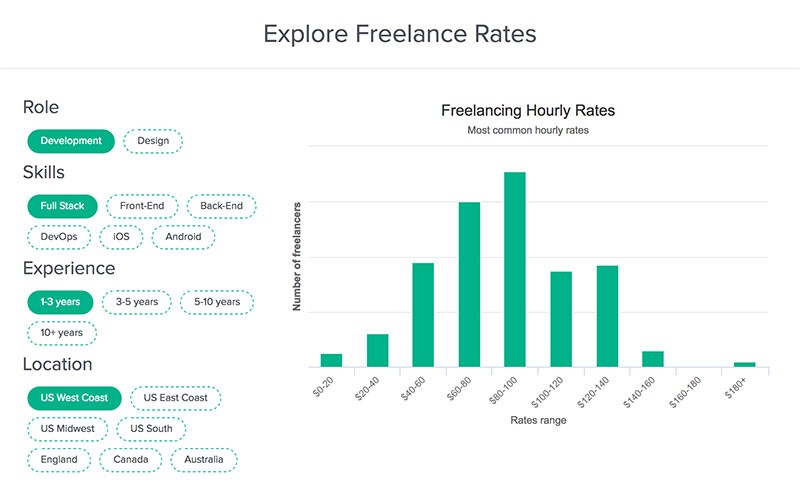
The Ultimate Guide to Pricing Your Freelance Web Projects
In the ever-evolving world of freelance web development, pricing your projects appropriately is paramount. It's not just about covering costs; it's about valuing your skills and delivering exceptional value to your clients. In this extensive guide, we'll delve into the intricate art of pricing your freelance web projects to help you maximize your earnings and maintain client satisfaction.
Understanding the Freelance Web Development Landscape
To embark on the journey of pricing your freelance web projects, it's crucial to first grasp the dynamics of the industry. Freelance web development is a diverse field, ranging from simple portfolio websites to complex e-commerce platforms. Understanding the market demand and competition will be your compass in setting the right prices.
Factors Influencing Your Pricing Strategy
Several factors come into play when determining your pricing strategy as a freelance web developer. These include your experience, expertise, project complexity, and the specific needs of your clients. Let's break down each of these factors:
1. Experience and Expertise
Your experience level and technical expertise are pivotal in pricing your services. Seasoned developers often command higher rates due to their proficiency and a proven track record of successful projects. Clients are willing to pay more for a developer with a history of delivering exceptional results.
2. Project Complexity
Not all web projects are created equal. Some may require extensive customization, integration with third-party tools, or intricate design work. Evaluating the complexity of a project is essential in determining the time and effort it will demand, which directly influences your pricing.
3. Client Requirements
Understanding your client's specific needs is fundamental. Customizing your pricing based on their requirements and goals ensures a tailored solution that resonates with them. Effective communication with the client is key to aligning your pricing with their expectations.
Pricing Models for Freelance Web Developers
As a freelance web developer, you have various pricing models at your disposal. Each model has its merits and is suitable for different scenarios. Let's explore them:
1. Hourly Rate
Charging an hourly rate is a common approach. It's transparent and ensures that you're compensated for the time you invest. However, clients may be concerned about costs escalating beyond their budget.
2. Fixed Price
A fixed-price model involves quoting a set fee for the entire project. This provides clients with cost predictability but requires careful project scope definition to avoid disputes.
3. Value-Based Pricing
Value-based pricing ties your fees to the perceived value your services bring to the client's business. It requires a deep understanding of the client's goals and the potential impact of your work.
Strategies for Effective Pricing
Now that you're familiar with the factors and models, let's delve into strategies to ensure your pricing is not only competitive but also reflective of your skills:
1. Market Research
Regularly conduct market research to stay updated with industry trends and pricing benchmarks. This insight will help you position your rates appropriately.
2. Showcase Your Portfolio
Your portfolio is a testament to your skills. Highlight your best work and success stories to justify your pricing.
3. Offer Tiered Packages
Providing clients with tiered packages allows them to choose the level of service that best suits their needs and budget.
4. Provide Detailed Quotes
When presenting a quote, break down the costs to demonstrate transparency. This instills trust and confidence in your clients.
Maintaining Client Satisfaction
Client satisfaction is the cornerstone of a successful freelance career. Even after settling on a fair price, it's crucial to ensure that your clients are happy with your work. Here are some tips:
1. Clear Communication
Maintain open and transparent communication throughout the project. Keep clients updated on progress and address any concerns promptly.
2. Deliver on Promises
Ensure that you meet or exceed the expectations set during the project proposal. Going the extra mile can lead to repeat business and referrals.
Pricing your freelance web projects is an art that requires constant refinement. By considering the factors influencing your pricing strategy, choosing the right pricing model, and implementing effective pricing strategies, you can position yourself as a sought-after web developer. Remember, client satisfaction and delivering value should always be at the core of your pricing decisions.
How Do I Determine My Hourly Rate?
Calculating your hourly rate involves considering your desired annual income, business expenses, and billable hours. It's essential to strike a balance between earning a fair income and remaining competitive in the market.
What Should I Include in a Fixed-Price Quote?
A fixed-price quote should include a detailed project scope, timeline, deliverables, payment schedule, and any terms and conditions. Clarity is key to avoiding misunderstandings.
How Can I Convince Clients of the Value I Provide?
To demonstrate your value, focus on showcasing your expertise, past successes, and the tangible benefits clients can expect from your services. Case studies and testimonials can also be persuasive.
What if a Client Requests Changes Mid-Project?
Addressing client change requests is common in web development. Ensure you have a clear change order process in place, outlining how additional work will be billed and the impact on the project timeline.
Should I Offer Discounts to Long-Term Clients?
Providing discounts to loyal, long-term clients can be a good strategy to foster ongoing relationships. However, ensure that the discounts do not compromise your profitability.
How Can I Handle Pricing Negotiations?
When faced with pricing negotiations, approach them with a collaborative mindset. Understand the client's concerns and be flexible while ensuring your services' value is not diminished.
Summary
In this comprehensive guide, we've explored the intricate art of pricing your freelance web projects. Understanding the industry landscape, considering key factors, and implementing effective pricing strategies are all essential steps in achieving success in this competitive field. Remember that client satisfaction and delivering value should always be your guiding principles.
